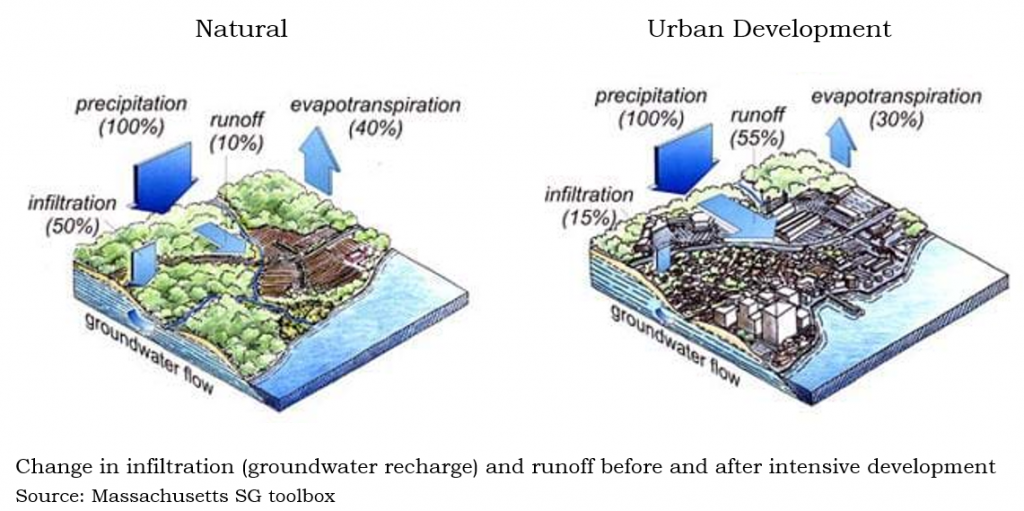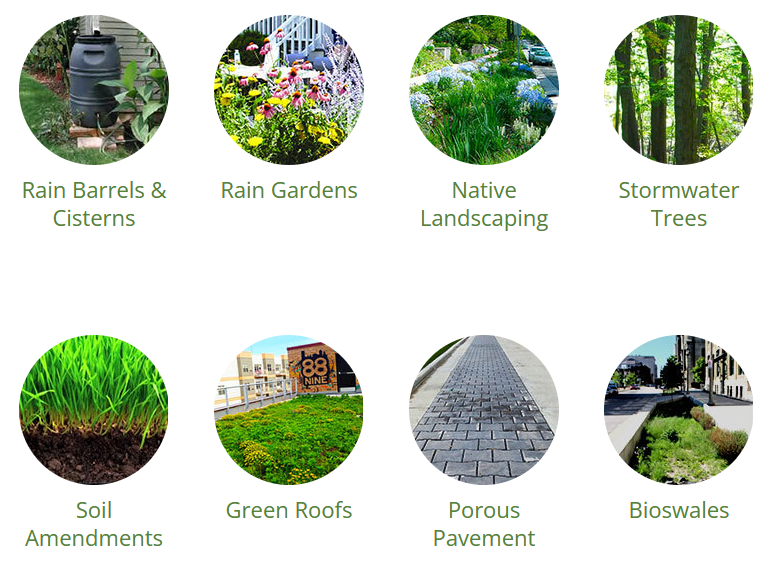Natural and Urban Water Cycles

Reduce the rate and volume of urban runoff
Green infrastructure provides on-site stormwater management, so it does not flow directly into local waterbodies. These systems increase the amount of stormwater that recharges the groundwater (infiltration) and is absorbed by plants (evapotranspiration).
Under natural conditions (forests and grasslands), stormwater runoff is mostly absorbed by plants and the soil (90%). This stormwater runoff recharges the groundwater supply and provides a certain level of stormwater cleansing, improving the long-term security of drinking water supplies and supporting ecosystem function. Engineers are building green infrastructure to replicate the natural process of managing urban stormwater by reducing flooding and filtering out nutrients that are carried by stormwater.
Building Roof Runoff
- Divert roof runoff to the lawn or rain garden instead of to a driveway, sidewalk, or directly to the street.
- Install rain barrels at your downspouts and use the water for irrigation.
- Build rain gardens for gutters to run into.
Lawn Runoff
- Maintain a healthy lawn. Avoid overuse of pesticides and fertilizers – use only the amount needed and only apply when necessary.
- Aerate the lawn to increase the rate of infiltration.
- If landscaping a new house, avoid soil compaction or till the soils and add compost before planting seed or laying sod.
Driveway Runoff
- Use porous pavement or pervious paver blocks when building a new or additional driveway or patio area—the same for rebuilding these hard surfaces.
- In winter – Limit the use of salt on the sidewalk and driveway.
- Keep chemicals stored in waterproof containers, or indoors. What do I do with…?
Farmland Runoff
- Meet tolerable soil loss (“T”) on cropped fields and pastures.
- Annually develop and follow a Nutrient Management Plan (NMP) designed to keep nutrients and sediment from entering lakes, streams, wetlands and groundwater.
- Divert clean water away from feedlots, manure storage areas, and barnyards located within this area.
- DOWNLOAD: “WI Runoff Rules–What Farmers Need To Know” (PDF).
.
Green Infrastructure Strategies

